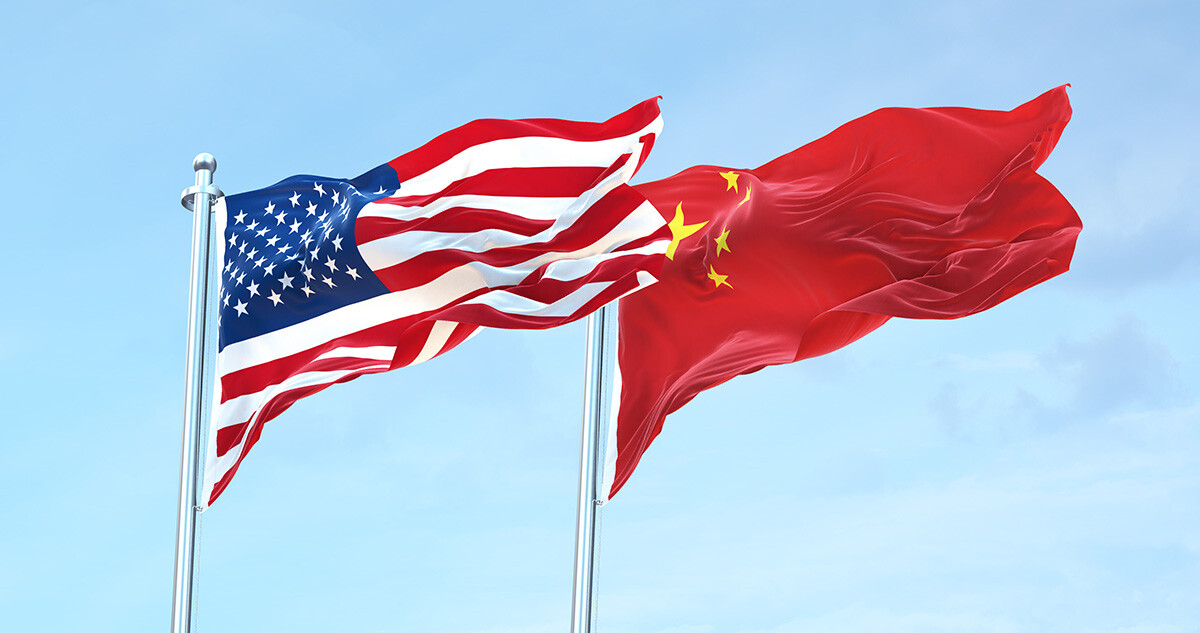As an expert in global life science logistics, Biocair has experience dealing with customs processes in many countries. We understand that each country plays by a different set of rules, and it’s important to us that we help demystify this topic for our customers worldwide.
Two territories we are regularly exporting from and importing to are the United States and China. It’s worth noting that the dangerous goods classification process differs between China and the United States.
Within this article, we aim to explain the process each country abides by and run through some of the typical import/export challenges you can face and explain the solutions we put in place to reduce them.
Classification of dangerous goods - explained
Before we begin to understand the different customs processes for each region, it’s important to know that we are referring to the process relating to the transport of dangerous goods.
Dangerous goods are materials or items with hazardous properties which, if not properly controlled, present a potential hazard to human health and safety, infrastructure and/or their means of transport.
 Below are the 9 classes of dangerous goods:
Below are the 9 classes of dangerous goods:
- Class 1: Explosives
- Class 2: Gases
- Class 3: Flammable liquids
- Class 4: Flammable solids
- Class 5: Oxidizing substances and organic peroxides
- Class 6: Toxic and infectious substances
- Class 7: Radioactive materials
- Class 8: Corrosives
- Class 9: Miscellaneous hazardous materials and lithium batteries
Pharmaceuticals may contain substances that meet any of the criteria for dangerous goods, with classes 3, 6 (for toxic materials under Division 6.1) and 7 being the most frequently encountered.
What is the dangerous goods classification procedure in China?
Before exporting a product out of China, a “Certification for Safe Transport of Chemical Goods” must be obtained. This requires that a sample of the product be sent to a third-party lab in China for safety testing. Unlike other countries, this is a regular request for shipping within China. The Chinese Government retains the responsibility to classify the product rather than the shipper or logistics specialist.
How the Chinese government classifies the dangerous good:
- The sample is collected and sent to a 3rd party testing lab chosen by the government.
- The sample is tested, and the lab provides a certificate indicating how the product should be classified.
- The lab does not return the sample and does not provide evidence of destruction of the sample.
What is the dangerous goods classification procedure in the US?
In the United States, classification can be completed by either the client or Biocair. Dangerous goods regulations specify that personnel involved in the processing of dangerous goods must be trained. This mandatory training covers a range of activities such as the packaging, marking and labelling of dangerous goods as well as the preparation of documentation. For air transport, for example, training requirements are provided under IATA Section 1.5, and it is the responsibility of any employer of personnel involved in these functions to ensure that a dangerous goods training program is in place.
 If the client is trained and classifies the shipment, Biocair trusts but verifies that this is done correctly. Most companies in the life sciences sector don’t classify their own goods. That’s where Biocair comes in with our expertise and specialized knowledge. Our dangerous goods trained staff work with the client to obtain the information necessary to correctly classify the commodities to be shipped. We also correctly package the shipment on-site, marking and labeling the material to ensure that it is compliant with dangerous goods regulations.
If the client is trained and classifies the shipment, Biocair trusts but verifies that this is done correctly. Most companies in the life sciences sector don’t classify their own goods. That’s where Biocair comes in with our expertise and specialized knowledge. Our dangerous goods trained staff work with the client to obtain the information necessary to correctly classify the commodities to be shipped. We also correctly package the shipment on-site, marking and labeling the material to ensure that it is compliant with dangerous goods regulations.
Typical import/export challenges faced and how Biocair addresses these
Customs documentation 👮📄
When going through customs a range of documentation is needed to make it a seamless process, including invoices, airway bills, licenses, permits or certifications and declarations. Any mistakes in documentation can result in the shipment getting delayed by customs officials.
Biocair’s solution to reduce customs documentation errors
Biocair operational staff are trained to prepare customs documentation, provide clients with certain document templates where applicable and review paperwork pre-prepared by clients. A senior operations team member then reviews it, ensuring that each shipment is inspected by at least two trained staff members.
If the client works with our in-house customs brokerage firm, Biocair Customs Brokerage, a third set of eyes is involved in the review of the documentation as well.
US Customs - random inspections 📦🔍
Regardless of whether you have all the correct customs documentation, shipments can still get snagged at US customs. This is because US customs may randomly hold and inspect packages.
Biocair’s solution to US Customs random inspections
The Biocair Operations team, US Imports team and Biocair Customs Brokerage all closely monitor shipments entering the US for customs snags and identify their root cause. Our US imports team works closely with both our internal brokerage team and external brokers to help keep shipments moving.
If a temperature-sensitive package is held, steps would be taken to issue a customs manipulation which acts like a permission slip from local customs authorities. This allows our team to access a package that is pending release. This sign-off allows our team to perform maintenance on the package such as refreshing the dry ice or PCM panels and documenting the actions taken. This ensures the integrity of the product is maintained.
Export control licenses ✈️📄
Some commodities might also require that an export control license be in place prior to the export of the goods. Export control refers to legislation that regulates the export of certain types of goods, software or technology whose export could reasonably be expected to adversely impact matters of national security, foreign policy or economic interests. Here are a few examples of when an export control license could be needed.
Example 1: Dual-use goods like potassium cyanide
Potassium cyanide is an extremely toxic chemical that is classified as a dual-use good, which basically means that it can be used for both civilian and military purposes. These types of goods are regulated because they can be used for legitimate purposes, such as a lab reagent, or for military purposes or even terrorism. An export control license must be obtained prior to the export of this chemical. The consequences of shipping it without an export control license are heavy fines and possible jail time.
Example 2: The genetic material of pathogens designated as dual-use goods
Certain pathogens are designated as dual-use goods due to the possibility of engineering them into biological warfare agents. Just as the microorganisms themselves are controlled under such regulations, their genetic material is controlled in the same manner. This could include any nucleic acid sequences from those pathogens such as DNA or RNA, or even genetic inserts associated with plasmid DNA, even if the sequences were prepared completely synthetically and not taken from the pathogen itself. Examples commonly seen are Vesicular Stomatitis Virus (VSV), highly pathogenic Avian Influenza, and Venezuelan Equine Encephalitis Virus (VEEV).
Example 3: Controlled technology, software and information
Certain types of technology, software and even information can also be regulated for export. A laptop, for example, would not typically be of major concern. If the genome for a controlled agent such as Ebola was saved to that laptop, however, the regulations would apply. Other common examples of controlled equipment could include centrifuges and spectrometers if certain parameters are met.
Biocair’s solution to identifying and obtaining export control licenses
Our experts here at Biocair know exactly which licenses you’ll need for your shipment. As your logistics partner, we’ll work with you to understand exactly what you’re shipping and guide you through the application process to ensure that the necessary documentation is obtained prior to export.
Providing expert care for international pharmaceutical shipments daily
In summary, dealing with customs on a global scale presents a wide range of import/export challenges. Having in-depth knowledge of international rules and regulations makes navigating the customs landscape easier.
That’s where choosing the right life science logistics partner is crucial. At Biocair, we deal with the delivery of pharmaceuticals every day. Our global network means we can have an international presence, backed up by specialist local knowledge. To learn more, connect with your local Biocair team. Or, read our case study covering our award-winning support for a global drug development program shipping active pharmaceutical ingredients between China and the United States.

Brian Padgett
US Compliance Manager
Based in North Carolina (United States), Brian has been involved in the pharmaceutical logistics industry for over 15 years. Brian advises and trains a range of clients regarding the classification, marking and labelling of dangerous goods and frequently consults on a wide range of compliance related topics including import/export licensing and permitting, shipment of controlled drugs and classification and shipment of biologics, including pathogenic material.

